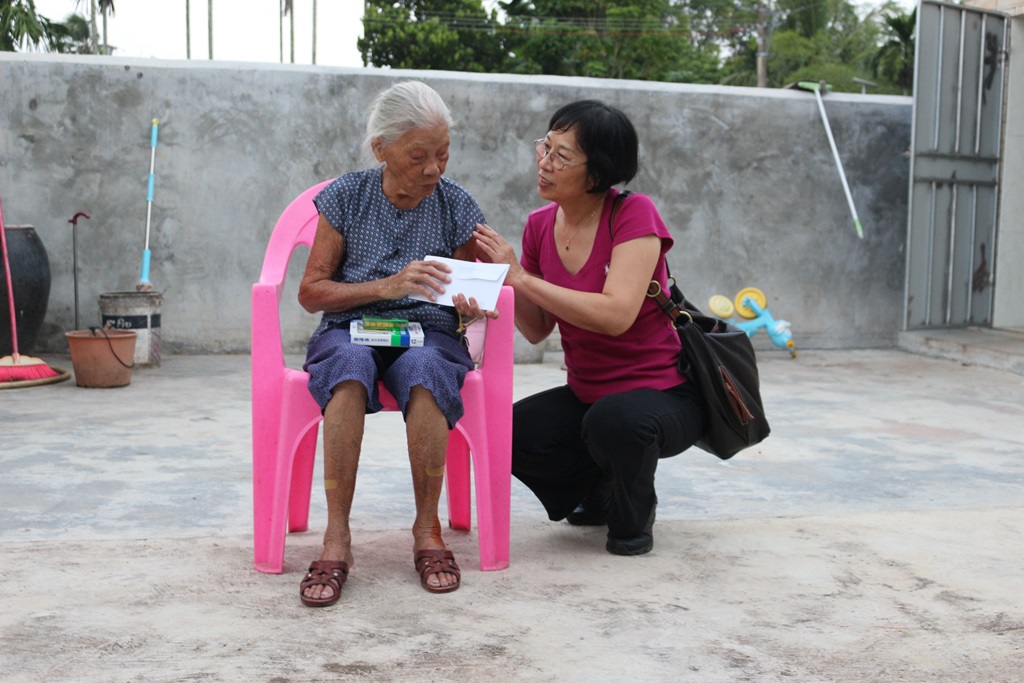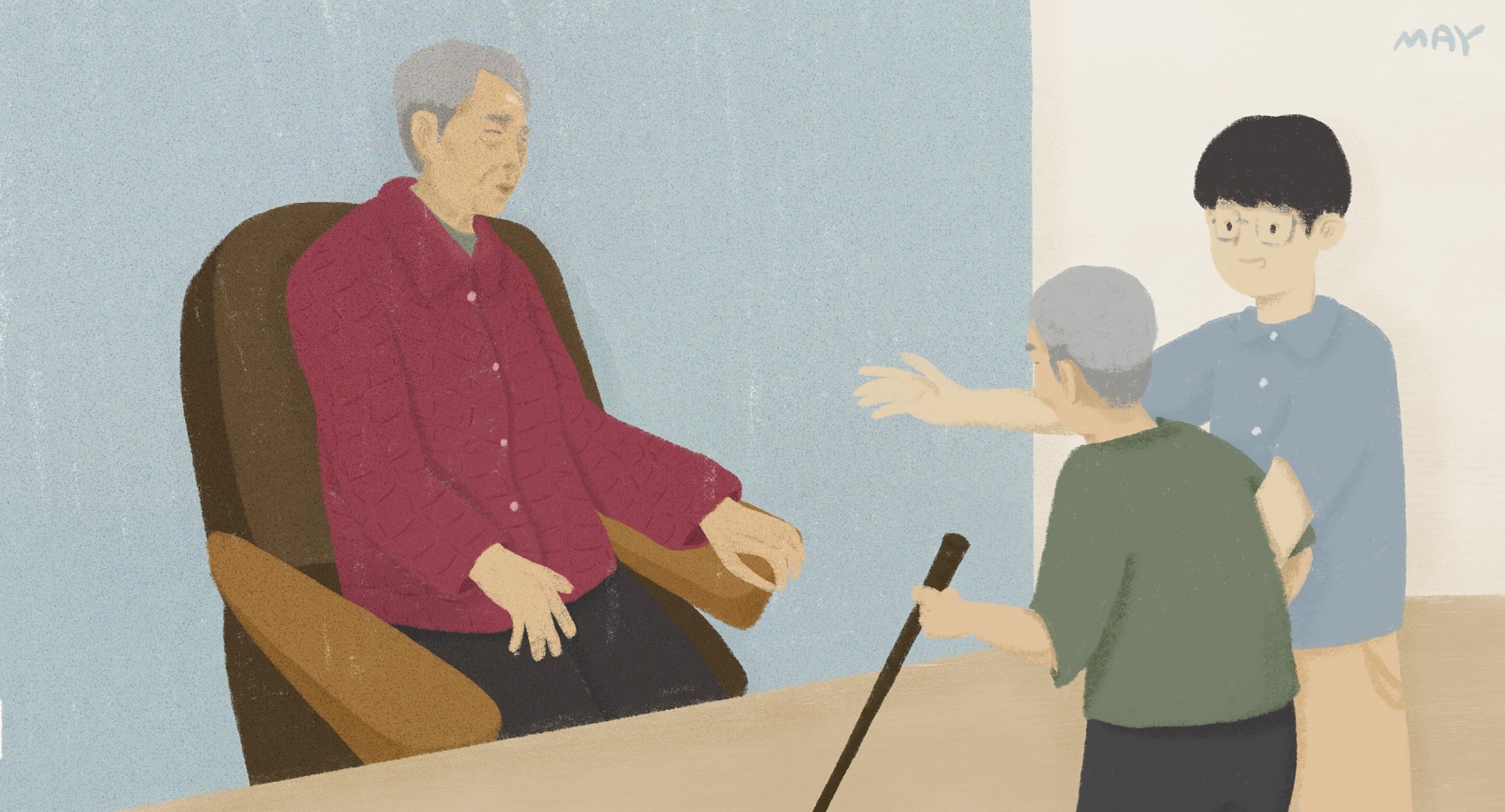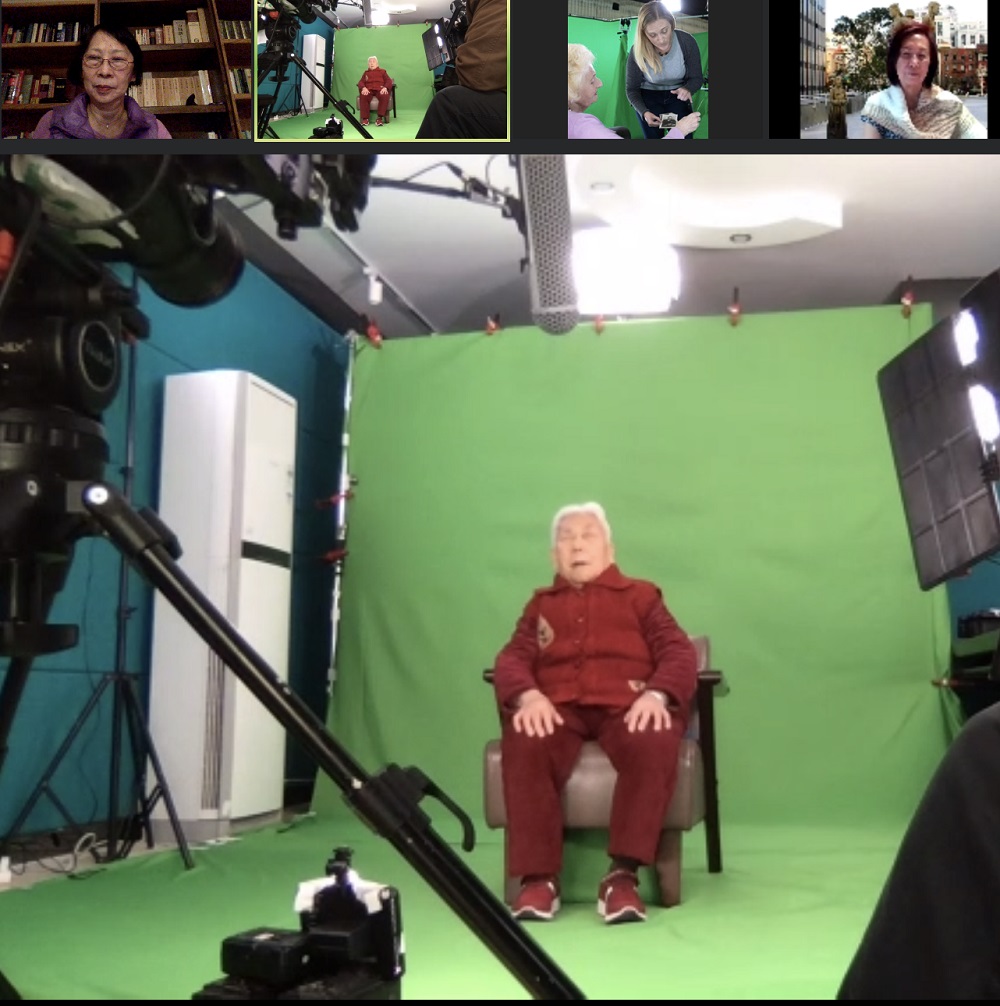

I began research on the “Comfort Women” issue two decades ago when working with a Vassar student who wrote a senior thesis on the “Comfort Women” redress movement in South Korea and Japan. During that process I noticed that, although an extremely large number of Chinese women were abducted into the Japanese military “ianjo” or the so-called “comfort stations”—rape stations set up by the Imperial Japanese forces during Japan’s aggressive war in Asia from 1931 to 1945—their painful ordeals remained largely unknown to people outside China. I found this lacuna seriously impairing the understanding of the full scope and the criminal nature of the “Comfort Women” system because Chinese women comprised one of the largest victim groups and their sufferings reflected the darkest end of the spectrum of Japanese military sexual violence. Hoping to bring to light their untold stories, I began researching and writing about the Chinese “Comfort Women.”
Writing about the women’s wartime trauma was mentally and emotionally challenging, particularly because I was suffering from chronic medical conditions during that time. It was also an arduous task to document the history of the “Comfort Women.” Digging into a large amount of material in Japanese, Chinese, and English, I worked on this research at nights and weekends besides my teaching duties in Japanese language and literature and other administrative work and research projects. To offer a more objective and layered discussion of the Japanese military “Comfort Women” system, I used the eyewitness accounts of both Chinese civilians and military men published during the war, as well as documents produced by former Japanese military personnel and reports and diaries of foreign nationals who witnessed the war atrocities in China. In collecting testimonies of survivors and eyewitnesses, I collaborated with Chinese scholars Su Zhiliang, Chen Lifei, Kang Jian, Chen Junying, and received support from many Chinese and Japanese researchers. Listening to and translating the survivors’ testimonies were deeply painful, but the courage of these women who went on fighting for justice after having suffered unspeakable atrocities gave me the strength to finish writing a book on Chinese “comfort women.”
The book, titled Chinese Comfort Women: Testimonies of Imperial Japan’s Sex Slaves, was published by three university presses: the University of British Columbia Press in 2013; Oxford University Press in 2014; and Hong Kong University Press in 2014. Named the Best Nonfiction Book of the Year by the Chinese American Librarians Association, it is the first English-language monograph to expose the full extent of the sufferings of hundreds of thousands of Chinese women whose lives were ravaged by the Japanese Imperial military sexual slavery.
The book consists of three parts. Part I traces the establishment of the military Comfort Women system in Mainland China from the early stage of Japan’s aggression in Manchuria and Shanghai (1932) to its rapid expansion after the Nanjing Massacre (1937), and to Japan’s defeat in 1945, demonstrating the close correlation between the proliferation of the comfort stations and the progression of Japan’s war of aggression. In outlining the historical background, Part 1 also brings to light several previously hidden aspects of the “Comfort Women” system: the ransoms that the occupation army forced the victims' families to pay; the numerous improvised comfort stations set up by small military units throughout the battle zones and occupied regions; and the sheer scope of the victimization--much larger than previously known.
Part II presents twelve comfort station survivors’ narratives, which were recorded by my collaborating researchers Su Zhiliang and Chen Lifei in their native language and translated into English by me. I grouped these narratives in geographical areas and in chronological order of the development of the warfare, placing the survivors’ narratives in the context of the war. Each survivor’s account begins with her prewar life and continues through her enslavement to her postwar struggles, revealing the prolonged suffering of the comfort station survivors.
Part III documents the comfort station survivors’ postwar lives and the “Comfort Women” redress movement in China. It shows how, for a long period of time, the survivors suffered from discrimination, ostracism, and poverty due to social prejudices and political exigencies in the postwar era. Part III also discusses the major legal debates and events concerning Chinese victims’ lawsuits, as well as the transnational activism supporting the Chinese survivors, particularly that from Japanese people. It shows how the suffering and stories of the “comfort women,” regardless of their nationality, resonate with people all over the world.
After the publication of the book, I continued my research on the “Comfort Women” issue and it has been deeply concerning to see that, despite the ample evidence, government officials and ultranationalist writers and activists in Japan have persistently denied the nature of the “comfort women” system as military sexual slavery. The main rhetoric of the denialists has been that “Comfort Women” were professional prostitutes in warzone brothels run by private agencies, and that neither the Imperial Japanese state nor the military forced the women to be there. However, the heinous brutality Chinese “Comfort Women” suffered, as the nationals of a country under Japanese occupation, shows indisputably the criminal nature of the “Comfort Women” system and the direct involvement of the Japanese military in this war crime.
The violent abduction of Chinese women started as soon as Imperial Japan began its aggression in China. Qin Hua Rijun baoxing zonglu (Collection of investigative records of the atrocities committed by the Japanese forces during Japan’s invasion of China), a nationwide investigation led by the Committee of Cultural and Historical Data of the Chinese People’s Political Consultative Conference and published in 1995, records many cases of such sexual enslavement. One case the book documented happened in the winter of 1932 when a unit of the 16th Brigade, 8th Division, of the Guandong Army occupied the Chaoyangsi area of Beipiao County. The troops immediately abducted local women into the military barracks to be their sex slaves; at the same time, the soldiers went about assaulting women in the nearby villages. Reportedly, over one thousand local women were raped in their own homes, including pregnant women, young girls, and elderly women.[1]

What happened in Beipiao County was not an isolated incident. As the war progressed, especially from the time of the Nanjing Massacre in 1937, abduction of local women to be sexual slaves became a regular part of the military actions of the Japanese troops. The vast majority of the Chinese “Comfort Women” were kidnapped by force. Peng Zhuying (born 1929), one of the survivors at the town of Yueyang, Hunan Province, told us at our interview in 2020 that the Japanese military bombed her hometown in 1938. She lost her sight and her mother and younger brother died because of the gas bombing. In 1939, Peng Zhuying’s older sister was captured by the Japanese soldiers and forced to be a “comfort woman.” In 1944, fifteen-year-old Peng Zhuying was also abducted and detained by the Japanese troops for a month as a “comfort woman.” Peng Zhuying’s foot was injured by the Japanese troops at her capture. Her sister was stabbed in her stomach during her incarceration.[2]
Similar to Peng Zhuying’s experience, the twelve survivors whose testimonies are presented in my aforementioned book were all abducted by the Japanese military and forced to become “Comfort Women.” The Japanese military officers not only permitted soldiers to carry out violent abductions but also participated in them. In fact, many of the comfort stations were set within the compound of the military barracks or strongholds. The numerous improvised comfort facilities set up by the small Japanese units in the war zones typically enslaved local Chinese women. As the field troops were constantly moving, these makeshift comfort facilities greatly increase the scope of the victimization due to the high replacement rate of the women enslaved. According to the investigation of He Tianyi, a researcher at the Hebei Provincial Academy of Social Sciences, by the end of 1943, the Japanese army had built 1,103 strongholds in the southern region of Hebei Province, which indicates that the total number of military strongholds constructed in northern China would have exceeded 10,000. Since each of the strongholds typically enslaved ten to twenty local women during the occupation, the number of local women enslaved in the military strongholds in northern China alone could have been between 100,000 and 200,000.[3]
Clearly, the “Comfort Women” were not prostitutes, and, as seen in the cases of Peng Zhuying and her sister, the vast majority of “Comfort Women” received no monetary payment. Worse yet, the families of many “Comfort Women” kidnapped from the regions under Japanese occupation were forced to pay a large amount of ransom to the occupation troops when they attempted to rescue the detainees. Hao Yuelian, a native of Wuxiang County, Shanxi Province, was only fifteen when Japanese soldiers gang-raped her in her own house in the early summer of 1943. She was then taken with other villagers to a military stronghold at Nangou to be a “comfort woman.” The Japanese soldiers forced her and other women and girls to watch the torture of the captured local men, and then locked them in a room and raped them. The soldiers raped the women and girls continually whenever there was no battle. Hao Yuelian soon became very ill, her lower body bleeding. The ordeals lasted for about a month until the soldiers abducted additional women from another village as replacements. In order to get her out of this torture, Hao Yuelian’s family paid a ransom to the occupation army. At that time, Hao Yuelian was already too sick to service the soldiers, so the troops took the money and let her go home. However, before Hao Yuelian was fully recovered, she was once again kidnapped by Japanese soldiers and taken to the stronghold. Every evening a group of soldiers would come and gang-raped her. Within a month Hao Yuelian’s body was severely damaged and she was unable to move. Thanks to a villager who happened to see her, Hao Yuelian’s father and older brother found the place where she was imprisoned. They managed to get her out when the soldiers were not around and carried her home. Hao Yuelian was bedridden for months.[4]
This kind of open kidnapping and extortion were widespread when the Japanese military held total control of people’s lives in the occupied territories. From the early 1930s to the end of WWII, the imperial Japanese forces established comfort stations over a vast part of Asia, and the majority of these stations were set in China’s mainland, where the Japanese aggression lasted from 1931 to 1945. The vicious crimes frequently happened in those improvised “comfort facilities.” Chen Liancun, a survivor I visited in 2017 at Baoting County of Hainan Island, was captured and detained at the Jiamao military stronghold at sixteen. She was forced to do laundry and other work during the day and was raped by the soldiers at night. She tried to escape but was recaptured and beaten until she passed out. Soon Chen Liancun became too sick to move, so the Japanese soldiers let her be carried home. However, not long afterward, she was abducted to the military barracks again and enslaved until Japan’s surrender.
The trauma of the “Comfort Women” remained unhealed after the war. The Japanese soldiers’ sexual violence severely damaged their bodies and left them deeply traumatized. Many of them became sterile. When I visited Hao Yuelian in the summer of 2018, she was in very poor health. She suffered nightmares every night, seeing Japanese soldiers chasing her in her dreams. Her adopted daughter showed me a chopping knife next to her bed. Hao Yuelian kept it with her because she constantly feared being violated. Looking at that knife, I couldn’t hold back mytears. Hao Yuelian passed away on September 27, 2018, not long after my visit.

As we are entering the second quarter of the 21st Century, history denialists in Japan are persistently trying to erase the atrocities committed under the Japanese military “comfort women” system from public memory. While warfare continues inflicting damage and suffering in today’s world, and rape of women is still used as an instrument of armed conflicts, it is critical to bring the narratives of the “Comfort Women” into public memory. Currently, I am working with the Comfort Women Justice Coalition, the University of Southern California Shoah Foundation, and the Nanjing Museum of the Site of the Lijixiang Comfort Stations in China to create an interactive Eternal Testimony of Chinese “Comfort Women.” This project uses the Dimensions in Testimony System developed by the USC Shoah Foundation to record and display survivor Peng Zhuying’s testimony in a way that will enable viewers to ask questions of the survivor about her life experiences and hear her responses in real-time, lifelike conversation. The project is near completion now and I hope it can help keep the legacy of the “comfort women” alive, thus future generations can learn from the traumatic past and take action to prevent the occurrence of more crimes against humanity.
『Chinese Comfort Women: Testimonies of Imperial Japan’s Sex Slaves』 >> https://www.archive814.or.kr/center/data/detail.do?controlNo=2302
Footnotes
- ^ Guan Wenhua, “Rijun dui Beipiao funü de lingru” (Japanese troops’ sexual violence against women in Beipiao), in Qin Hua Rijun baoxing zonglu, ed. Li Bingxin, Xu Junyuan, and Shi Yuxin (Shijiazhuang: Hebei renmin chubanshe, 1995), 69.
- ^ Interview conducted by “Comfort Women” Justice Coalition (California, United States of America) on October 19, 2020.
- ^ Peipei Qiu with Su Zhiliang and Chen Lifei, Chinese Comfort Women: Testimonies of Imperial Japan’s Sex Slaves,
(London and New York: Oxford University Press, 2014), 40-41. - ^ This account is based on my conversation with Hao Yuelian and her adopted daughter on August 5, 2018, and her testimony collected in Zhang Shuangbing, Paolou li de nüren—Shanxi Rijun xingnuli diaocha shilu [Women detained in the strongholds— Investigation records on the Japanese military sex slaves in Shanxi Province](Nanjing: Jiangsu Renmin Chubanshe, 2011), 167–68.
- Writer Peipei Qiu
-
Professor Peipei Qiu has been lecturing on East Asian literature, including that of Japan and China, as well as women's studies at Vassar College in New York since 1994. In 2013, she published a groundbreaking book titled "Chinese Comfort Women: Testimonies of Imperial Japan's Sex Slaves," which delves into the narratives of twelve survivors of the "Comfort Women" system and the “comfort stations” that were operated in mainland China during the Japanese occupation.
https://www.amazon.com/Chinese-Comfort-Women-Testimonies-Imperial/dp/0199373892